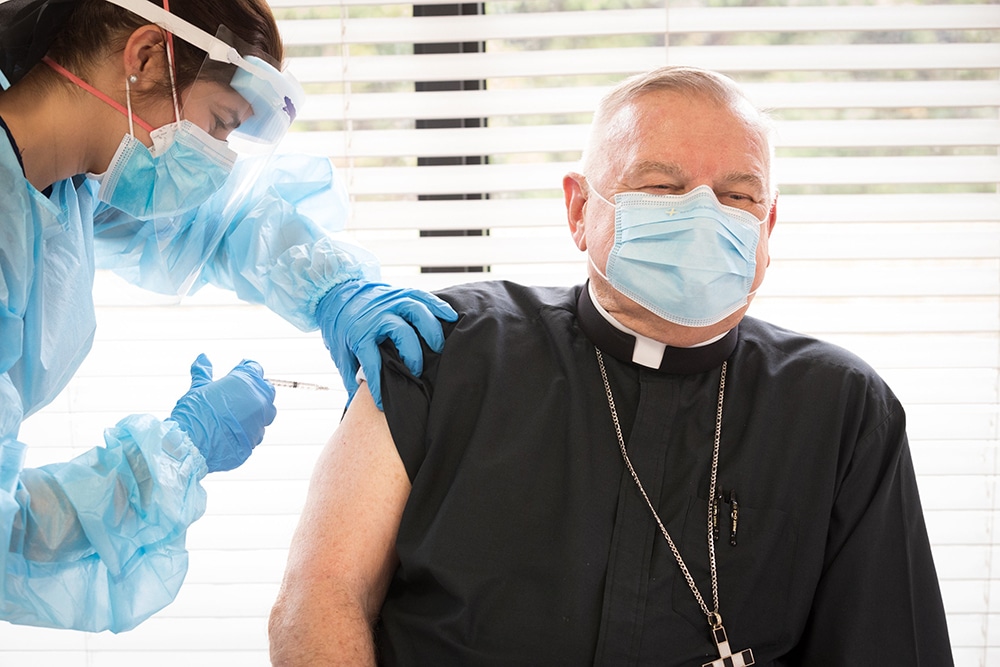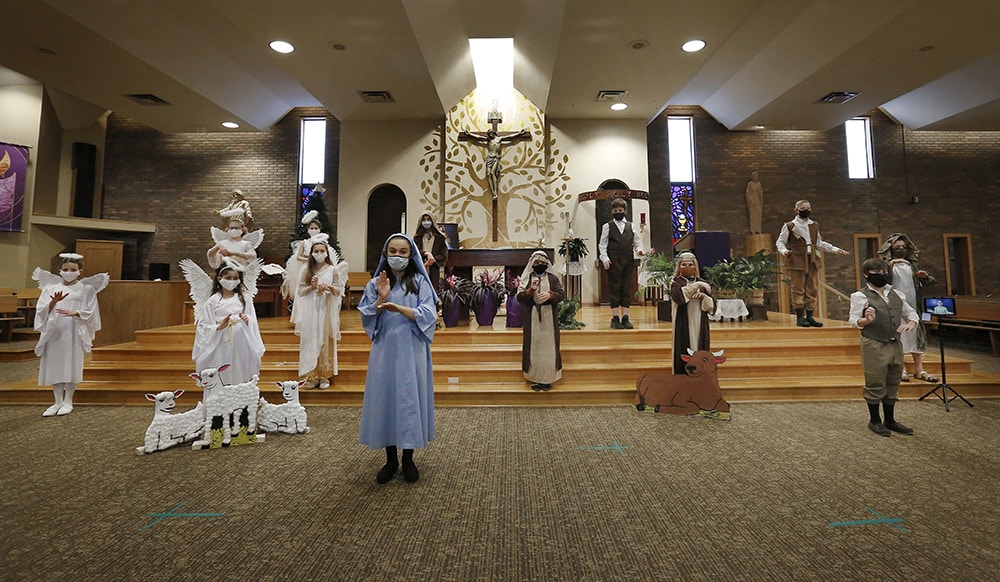The COVID-19 pandemic has had a profound effect on how Catholics express and teach the Faith. Amid concerns about meeting in person, directors of religious education and youth ministers have had to get creative and gain technological skills that they never thought they would need.
Speaking with religious educators and youth ministers across the United States, you get a taste for how the coronavirus has made their jobs more complicated.
One of the pandemic’s most obvious impacts has been the shift from in-person faith formation classes to online, home-based instruction.
For decades, the U.S. Conference of Catholic Bishops has been encouraging dioceses and parishes to transition faith formation to a home, family-centered model. Now the pandemic has made that shift a reality.
Deacon Kevin Staszkow, director of the Office of Youth and Young Adult Ministry and the Office of Family and Faith Formation for the Diocese of Sacramento, California, said that “if there’s ever a time to make a strategic shift in the way we do faith formation, now would be the time.”
Home-built program
Most dioceses use age-appropriate curriculum that is offered by various Catholic publishers, including OSV. Some dioceses have decided to create their own formation programs.
The Archdiocese of Atlanta built its Families Forming Disciples program to lead catechetical leaders, catechists and families through experiences at home to evangelize and educate. The FFD program is available free on the archdiocesan website.
“Some people take and run with it as is and do it on Zoom,” said Michele McHale-Pickard, associate director of faith formation for Atlanta’s metro area. “Other people are doing it in person, socially distanced. Others are using portions of it to fit into other things that they’re already doing.”
The program, which is available in English and Spanish, was introduced in August during the archdiocese’s catechist conference hosted by Virtual Catholic Conference. McHale-Pickard said that more than 5,000 people participated in the free online convention, with attendees from as far away as the Philippines.
“It’s been a joy to see how people have walked with it and made it their own,” she said.
Starting with vibrant VBS
At Holy Name of Mary Parish in San Dimas, California, the first major challenge was planning a summer vacation Bible school program that would keep children engaged online.
After receiving positive responses about offering a virtual VBS, Melanie Bailey and her team created daily videos to appeal to the children. The team had to quickly get up to speed on the technical aspects of online meetings.
“We set up our recording studio, made our background, figured out lighting and sound, editing,” said Bailey, the parish’s coordinator of K-8 catechetical programs. “Lots of new skills, and drawing on the skills of people beyond us. Our catechists became our actors.”
There were morning and evening sessions on Zoom for the VBS students, who were then sent off to watch the videos with their families, she said.
The knowledge gained during the summer was then incorporated into the parish’s fall catechetical programs, with helpful guidance from the Archdiocese of Los Angeles, Bailey said.
“Not just due to the pandemic, but also because for a long time we really reflected how important the family is to the success of any of our catechetical programs, we decided to shift this year to a family-centered catechetical model,” she said.
“In essence we created a three-part model to support the family on a lifelong journey of discipleship.”
There are 460 families in the parish program, from first through 12th grades, she said. That includes sacramental preparation for certain age groups.
Their parish website explains the program’s three parts: Adult Faith, Family Faith and Gathering as Church, all centered around encountering Jesus.
The families are given lots of options for things to do, and parents are asked to do something for their own faith growth every month, Bailey said. Possible activities to enjoy as a family — live or virtual — include attending Masses, retreats, Scripture reflections and many others.
“We are trying to come up with strong resources for kids to really encounter Christ in the family setting and learn the major concepts of what we believe, practice and preach in our Faith,” Bailey said.
“Hopefully, where we started when we first discerned this, is that this is making the Faith much more present to the whole family, which we hope will have a lasting impact long beyond the reception of any sacrament,” she added.
Scaled-down classes
With government restrictions on in-person meetings, operating within the limits is sometimes difficult, especially since children are generally anxious to get back to normal classroom instruction and interact with their friends.
Kristin Casas, coordinator of elementary religious education at Holy Trinity Parish in San Antonio, said that she has 176 children preparing for first Communion, and 144 of those are home-based.
“We were only able to do very small classes, and only had a few adults who were comfortable coming back into the building to teach the classes,” Casas said.
Casas said her preschool through fifth-grade program normally serves 500 to 600 children. But since most of them have shifted to home-based instruction, it takes less time to prepare to teach the relatively small number of kids who come for in-person classes.
“It’s created a lot more correspondence with families on my end, just to make sure that they’re getting what they need, that we can assist them remotely the best we can,” she said. But she misses the crowds of children.
“The biggest absence right now is just having the sound of the kids going up and down the halls, because we’re literally checking them in one at a time at the door,” Casas said. “We take their temperature. With their little masks, they walk down the hall to their classroom, and it’s so quiet, and the quiet is just not normal.”
Necessary innovation
With most children attending school online from home — and many of their parents working from home — they generally don’t care to sit in front of a computer screen in the evening. So it’s important to create online religious education content that keeps them interested.
Emily Belchick, director of youth ministry/faith formation, and her team at Mary, Mother of God Parish in the southern suburbs of Pittsburgh, came up with the idea of a Zoom meeting formatted like a talk show.
The show features an energetic host, music, dancing and special guests who talk about the day’s theme. The pastor, Father Terrence O’Connor, usually throws out a challenge to viewers, such as reading Scripture or doing something kind for a neighbor, that connects the Faith with real life.
That’s the kind of innovative programming that the pandemic is leading dioceses and parishes to try. The current health crisis has presented an opportunity to not just make religious education different but better.
“Our attitude has been discipleship doesn’t change. When things get rough, we still need to reach out. We’re still called to be disciples,” said Deacon Staszkow in Sacramento.
“The Church, in my opinion, can use a lot more pastoral imagination,” he said. “What could we do? Yeah, we’ve done it for 20 years like this, but how could we change? I’m hoping the pandemic forces us to rethink all of our models and the way we do everything in formation.
“Jesus is the one who brings the grace. It’s not us, anyway; we’re just trying to help.”
William Cone writes from Pennsylvania.







